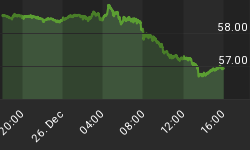On Monday, the Netherlands, Denmark, Iceland, Bulgaria and Thailand suspended the administration of the Covid-19 vaccine developed by UK pharmaceutical giant AstraZeneca (NASDAQ:AZN) and Oxford University. In what is beginning to take the shape of political subterfuge, the five joined the likes of Germany, France, Italy and Spain that had effected a ban days earlier out of what the governments have termed as ‘an abundance of caution.’ Austria was the first country to stop using the AZN, vector-based vaccine ostensibly due to a reported illness from a pulmonary embolism and death from coagulation disorders.
Never mind the dearth of real evidence linking the AZN vaccine to the illnesses and/or deaths.
Of the 17M people vaccinated in EU and U.K., no conclusive evidence has been found that suggests that AstraZeneca's vaccine actually increases risk of pulmonary embolism, deep vein thrombosis (DVT) or thrombocytopenia, in any gender or age group in any particular country.
On the contrary, so far, 15 events of DVT and 22 events of pulmonary embolism have been reported among those given the vaccine in the EU and U.K., based on the number of cases registered as March 8. That’s actually much lower than the hundreds of cases that would be expected among the general population under normal circumstances according to AZN Chief Medical Officer Ann Taylor.
Further, despite the low number of thrombotic events recorded, cases were still lower in the vaccinated group. So far there has been no evidence of increased bleeding in over 60,000 participants enrolled.
Multiple experts are now saying that the vaccine is safe and that the AZN’s Covid-19 vaccine is being unfairly targeted by EU countries, noting the suspensions hinder efforts to roll out vaccines worldwide.
On Friday, WHO spokeswoman Margaret Harris endorsed AZN’s vaccine saying, "Yes, we should continue using the AstraZeneca vaccine. There is no indication to not use it".
Nevertheless, they say in investment circles to buy the rumor, sell the news. Here are three Covid-19 vaccine stocks to keep on your radar.
- Novavax
A year ago, Gaithersburg, Maryland-based Novavax Inc. (NASDAQ:NVAX) was a struggling biotech company; fast forward to the present and NVAX is 2,500% more valuable than it was 12 months ago, thanks mainly to its very promising Covid-19 vaccine candidate, NVX-CoV2373.
A few days ago, Novavax announced that clinical tests had shown that its coronavirus vaccine was 96.4% effective against mild, moderate and severe cases of Covid-19 caused by the original strain and also 48.6% effective in a midstage test in South Africa where mutated strains are dominant. That makes NVX-CoV2373 the most successful vaccine developed against Covid-19 to-date, ahead of authorized drugs from Pfizer Inc. (NYSE:PFE) and its partner BioNTech (NASDAQ:BNTX), Moderna Inc. (NASDAQ:MRNA), Johnson & Johnson (NYSE:JNJ) and AstraZeneca.
The Novavax study enrolled more than 15K participants between 18-84 years of age, with 27% of test patients over the age of 65. Both the U.K. and South Africa trials, showed that the vaccine is well-tolerated, with low levels of severe, serious ((SAEs) as well as medically attended adverse events.
Novavax has inked a deal with Takeda Pharmaceutical (NYSE:TAK) that will see the development of 250M doses of COVID-19 vaccine in Japan.
The Covid-19 vaccine will certainly become a major revenue lifeline for Novavax if approved. Still, the massive runup by NVAX stock--including 95% YTD- makes it hard for investors to get good entry points.
- Curevac
Despite having a rather promising Covid-19 vaccine candidate, CureVac (NASDAQ:CVAC) has continued to fly under the radar of many investors.
But that could be a mistake.
Because, the company’s CVnCoV vaccine has been shown to remain stable for three months at +5 Celsius, or the standard refrigerator temperature. The vaccine remains stable for up to ready-to-use room temperature for 24 hours.
With just 6 -7B doses available for 2021, the estimated COVID-19 vaccine production across the world for 2021 will be just enough to cover less than half the global population by the year-end, The Wall Street Journal reported in February. Further, virus mutations, supply constraints and events such as the AstraZeneca saga will offer opportunities to developers of second and third generation COVID-19 vaccines such as CureVac to prove their worth against emerging strains and established players such as Pfizer, BionTech and Moderna.
Better still, CureVac is looking to take mRNA technology to the next level.
CureVac has struck a partnership with electric vehicle maker Tesla Inc. (NASDAQ:TSLA) to develop a mRNA printer that with the help of required reagents could develop mRNA medicines on a computer, tailored to a particular patient’s requirement.
The drug printer is about the size of a regular car, and it could ‘print’ the medicine on-site after sourcing the reagents via a courier and downloading the prescription for the required medicine over the internet.
“The printers can be placed in pharmacies and doctors' offices around the world,” Ingmar Hoerr, founder and CEO of CureVac has said.
Though it could be several years before the device is ready for mass production, it’s a very interesting concept that could dramatically change how vaccination programs are delivered in the future.
#3. Ocugen
Malvern, Pennsylvania-based Ocugen Inc.(NASDAQ:OCGN) is a clinical stage biopharmaceutical company that mainly focuses on the discovery, development, and commercialization of transformative therapies to cure blindness diseases.
However, the company’s whole-virion inactivated vaccine, Covaxin, has demonstrated a high efficacy trend against COVID-19, including significant immunogenicity against emerging strains. In early January, Ocugen’s India partner, Bharat Biotech, won the emergency approval Covaxin from the Indian government. Ocugen chief executive officer Shankar Musunuri recently told Reuters that his company plans to sell 100M doses of its COVID-19 vaccine in the United States this year.
As expected, OCGN stock has been on a tear, climbing more than 3,000% since December.

















